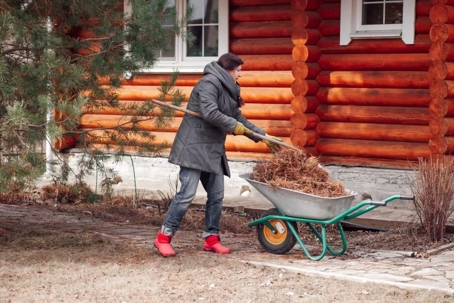Essential Lawn Care for Winter: Pro Tips for Healthy Grass
Discover how lawn care experts protect grass when temperatures begin to drop in the fall. Knowing the right way to care for a lawn in autumn will prevent a lot of trouble the following spring. But what do the professionals recommend once the leaves begin to fall? Find the steps that lawn pros take before winter sets in.
8 Winter Lawn Care Tips for Cold Weather, Snow Mold, and More
Taking care of the lawn in the winter will ensure that the turf is healthy and strong in the spring and summer. Some common problems that crop up include winter kill and brown patches. We compiled some helpful winter lawn care tips below that will keep the grass strong and healthy during the cold seasons.
1. Mow the Grass Low
Mowing the grass low protects any new shoots that emerge before the first frost appears. Cutting the grass low with the help of a lawn mower will also prevent rodents and pests from taking over the lawn. Maintain sharp mower blades to cut the grass low.
Lots of small critters seek tall grass plants for cover as they dig into the ground and create nests to hibernate for the winter. When spring approaches, the pests may destroy the lawn by undermining the grass, eating the roots, and damaging new growth.
2. Remove Any Debris From the Lawn
Many trees shed leaves in autumn. These leaves collect in the yard if homeowners do not regularly rake them. Removing dried leaves from the lawn keeps the yard healthy. It protects the grass from excess moisture, suffocation, and lack of sunlight. Leaves and other debris in the lawn can also attract rodents, insects, and other pests that cause diseases.
3. Aerate and Fertilize
Aerate the lawn at the end of autumn before the first snowfall. Aeration helps refresh the lawn’s soil and nourish its roots with oxygen and nutrients. Remember to feed winter fertilizer to the lawn after aeration so the grassroots receive extra nutrition.
A crucial part of winter lawn care involves fertilization before the cooler months. It ensures healthy, strong grass plant growth when spring comes around. Aerating the lawn before fertilization opens up the lawn soil and prepares the plants to receive nourishment.
4. Reseed With Cool Weather Grass Seeds
Part of the effort to counter a winter drought includes seeding cool-season grasses, like fescues, in late summer or early fall. Although fescues are a dormant grass during the winter months, their roots continue to thrive. The roots will keep growing and storing nutrients for the next spring. Scatter the seeds over the freshly aerated lawn with the help of a spreader. However, don’t overseed as this is not recommended for the southern turf.
5. Discourage Heavy Foot Traffic Over the Lawn
People often forget that dormant lawns still need proper care, and treading over them can cause compaction. Avoid walking on hibernating grass because this will damage it very quickly. The lawn may also not grow back well in the spring. Even healthy, strong grass can only tolerate so much foot traffic during the winter storm season.
6. Use Ice Melters With Caution
With the drop in temperature, driveways and front yards might become slippery due to sleet and freezing rain. This is when you can use ice melters which remain a worthwhile solution to this problem, creating a safe place to walk and preventing injuries. However, homeowners should practice caution when using ice melters because they can burn the lawn. Natural ice melters, like wood ash and coffee grounds, will cause less harm to the plants.
7. Keep An Eye on the Weather Forecasts
Make the necessary lawn preparations for the cold to save time and effort during the winter. Winter represents an opportune time to care for a lawn so the grass develops strong roots. A few small, simple steps will ensure a healthy lawn in springtime.
Healthy grass will tolerate cold weather better than a weakened lawn. However, the coldest months of the year can also trigger extreme weather conditions that punish even the strongest grass. Remember to check the weather report regularly to guard against unwelcome surprises.
8. Get Ready For Next Spring Now
Although most turf falls dormant during the winter months, the grass still needs care and attention. Any investment made during the winter will show in the springtime when the grass comes back healthier and with stronger roots. Well-maintained grass resists pests and diseases better. The care it receives throughout the year will serve it well during the darkest months.
Professional Winter Lawn Care | Heroes Lawn Care
Now that you know how to care for a lawn during the winter, watch the pros in action this fall. Our lawn care experts draw upon decades of combined experience to help our customers get their grass ready for when the cold weather hits. Call Heroes Lawn Care at 844-980-LAWN to schedule a free consultation today!




